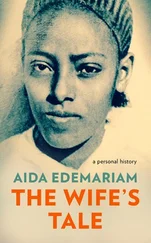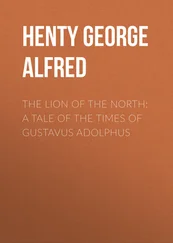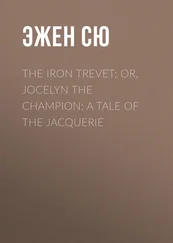One day she was passing the receiving room when she saw her grandmother had a visitor. This was nothing more than routine – incense, roast chickpeas, coffee, questions, how are you, and how are you, and well, thanks be to God. But something made her hesitate in the doorway. The visitor looked at her and set down her cup. ‘Your mother is tiring. You must come at once.’
Setechign had been ailing for months. On Yetemegnu’s last few visits she had sat by her mother’s bedside, trying to manage the fear that rose through her body when her mother complained of what felt like knives cutting through her stomach and refused to eat. Then, three weeks ago, her brother Nega had taken a month’s supply of food to their father Mekonnen, who, having come off worst in a dispute with a rival, was imprisoned in Debrè Tabor. On the way home the boy had had to swim across a river; that night a fever clenched his teeth and threw his head back in a rictus of pain. Holy water, administered in dousings and drenchings and trickles through rigid jaws, did not help, and he died the next midnight. The governor took pity on his prisoner and released Mekonnen so he could mourn his son. For three days Mekonnen had sat with his lyre, weeping, singing of his beautiful swimming boy. Setechign simply weakened, disappearing further and further into the hollow under the blankets.
Her mother’s house was full of people when Yetemegnu arrived. They cried in the corners and wept through the receiving rooms. They held her, and led her into the bedroom.
Setechign had already been washed and laid out. Her big toes had been tied together, as was done for Lazarus, and her thumbs, so her arms ended in a spear-point aimed at her feet. She had been wrapped in a winding sheet of rough white cotton, and then in a palm shroud. The child drew near, and stood by her mother’s head. The hair was glossy, the eyes closed. They would not open – decades later Yetemegnu would remember and weep as if it had just happened.
After the short service, and the first prayer for absolution, scores of people – priests and deacons, relatives and neighbours who had eaten Setechign’s injera and drunk her mead – followed the bier out of the house and down the road toward the church. The bearers had not travelled far, pacing slow, leading a low hubbub of gossip and care, when they set her down. At once the chat stopped, and the crying began again, the women leading. The deaths Setechign had suffered, the lives she had brought into being. Her loves, her lineage, her generosity, called out, rhymed out, echoed in chorus. Then the deacons sang another prayer, the bier was lifted, and they carried on. Seven times, so all the thoroughfare knew of her passing.
In the churchyard she was set down while her male relations dug into the ground. A smell rose, of loam and of rain. Yetemegnu was brought to the front. Now she could see the priest who clambered into the shallow grave; see his censer swinging, one corner, another, another, overlaying earth with pious perfume. Hear the final prayers. Watch the bending backs lower their freight into the ground, head to the east, feet to the west, feel, like a blow to her own body, the first handful of soil land upon her mother.
In the waning years of the Gondarine age, when emperors became puppets and warlords danced them on and off their thrones as mood and circumstance took them, Emperor Teklè-Haimanot II, godly, handsome (and not a little vain), tried to live up to his name by planting seeds of piety wherever he went. By the end of the eighteenth century, when he was ushered into a monastery by a brother eager to take his turn as puppet-in-chief, he had established six churches, among them a structure he at first called Debrè-hail-wa-debrè-tebab, mount of might and mount of wisdom, and then, because it was consecrated on the feast of Mary’s Presentation to the Temple, Ba’ata Mariam.
Ba’ata was, from the beginning, well endowed. Teklè-Haimanot settled upon it fertile lands that stretched down into the Bisnit and Qeha valleys, into Gabriel, and even to the districts of Dembiya and Deresgé, a whole day’s journey away – lands from which a fifth of all harvests flowed back to the church. A spring was discovered and designated holy. Ba’ata’s tabot, its life-giving replica of the Ark of the Covenant, was of marble, and the emperor commissioned the best of fresco-painters to illuminate its walls. By the early 1800s Ba’ata was among the richest, most powerful, and, some said, most beautiful of the forty-four churches in Gondar. Students walked for days to study under its dark trees, learning the syllabary, the psalms, the homilies of Mary, and especially the aquaquam, the slow dance of David before the Ark, of which Ba’ata claimed 276 masters.
When, some fifty years later, Emperor Tewodros II’s chronicler described the capital’s priests as debauched occultists (and his liege, of course, as the opposite of these things), there was perhaps something in it. Certainly they were not accustomed to being gainsaid, and especially not by a brawling upstart they mocked for being born to a mother so poor she’d had to sell purgative kosso to survive; so poor, one story went, the priests of Ba’ata turned her away when she brought her son to be baptised: she could not afford the two jars of dark beer, two bowls of stew and forty injera they demanded in payment.
But they would have done well to remember that this so-called upstart had also defeated lord after warlord to become emperor in act as well as in name, because they soon found that the churches, with their vast tracts of land and internecine theological disputes, were next. Five years later Tewodros stripped Gondar of its status as capital; ten years after that he seized from its churches any land he deemed surplus to requirements; finally, on the sixth day of the third month, when, wrote his chronicler, the very stars ‘began to fly about as though struck by fear’, Tewodros sacked the sanctuaries and set fire to the city. Castles, homes, churches – everything burned. Bells, chalices, drums, censers, crosses, manuscripts were torn out of their places and taken for his treasuries. Priests who fought to keep them were fed to the pyres.
In the silence after Tewodros and his soldiers were gone, as embers flickered against the dark like so many more burning towns, Ba’ata counted its blessings. The grand outer circles, the frescoes and the holy of holies smouldered and smoked, but the tabot, being marble, had not been consumed, and so the heart of the church was intact. The vestments encrusted in gold and silver, the sistra and the drums, the illuminated manuscripts, had been hidden underground, in a chamber below the holy of holies, and they too had survived. The priests built a temporary hut in the grounds and continued their ministry.
But they were again besieged. ‘Oh master!’ they wrote to Tewodros’s successor, Emperor Yohannes IV, borrowing from Psalm 79, ‘The heathen have come into thine inheritance; thy holy temple have they defiled; they have laid Gondar in heaps.’ But Yohannes was already occupied, leading an eighty-thousand-strong force against Italian armies threatening to take the Eritrean highlands, so he asked Menelik, king of Shewa (and his chief rival) to intercept the Sudanese Mahdists advancing on Gondar. Menelik did not arrive in time: the jihadists razed nearly every remaining church to the ground. Only two escaped – Medhané-Alem and Debrè-Birhan Selassie, the latter protected, people said, by a swarm of holy bees.
By the early years of the twentieth century, when Tsega first followed his teacher of scriptures through the fields and thick woods, Gondar, which at its zenith had held up to seven thousand souls, was home to less than a tenth of that number. The castles, once hung with silk and ivory, chalcedony and Venetian glass, were bare and cold, fluttering with bats and pigeons. Thatched huts huddled as if for warmth against the outer walls. Only on Saturday, market day, did the town manage to summon up something of its former bustle.
Читать дальше












